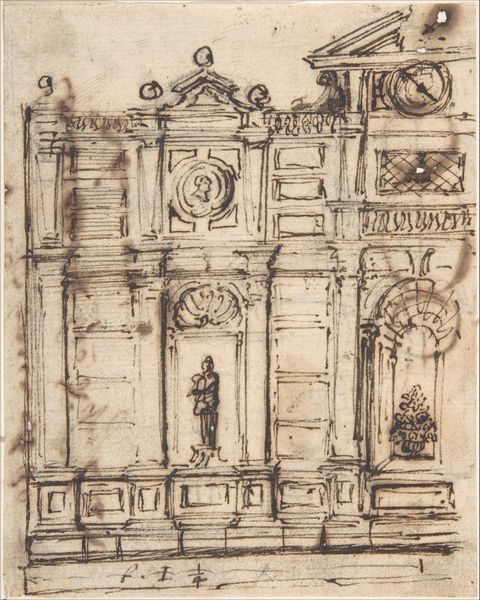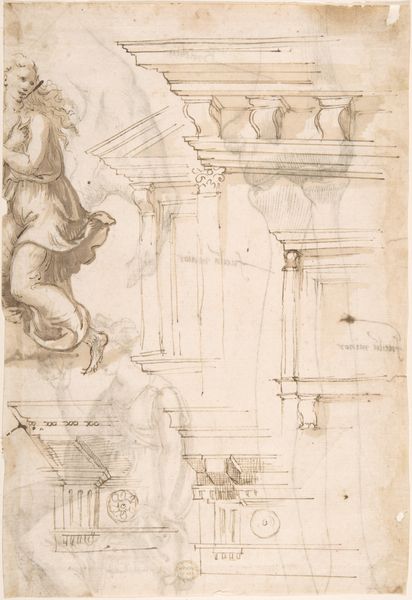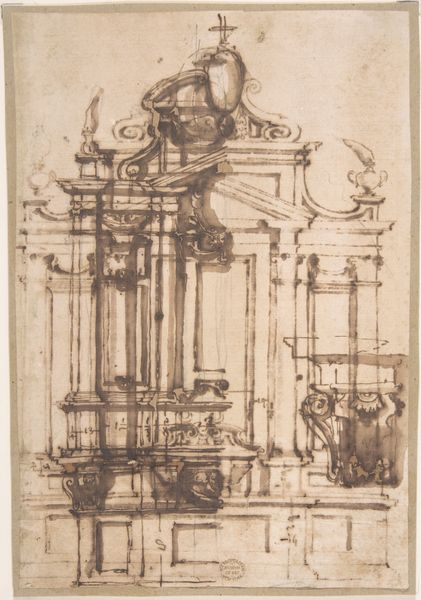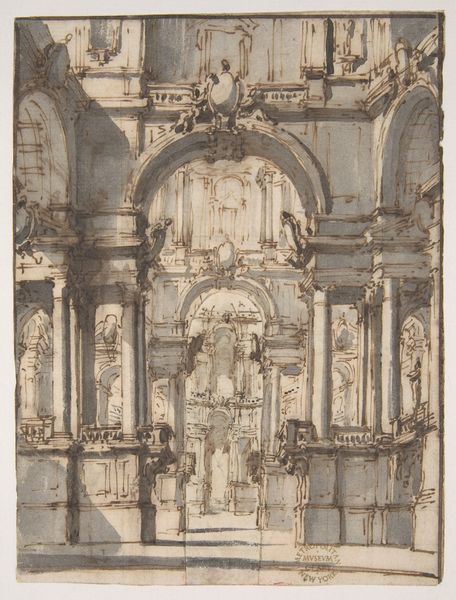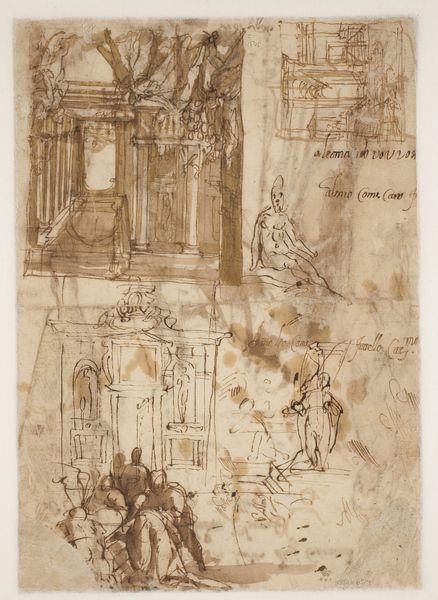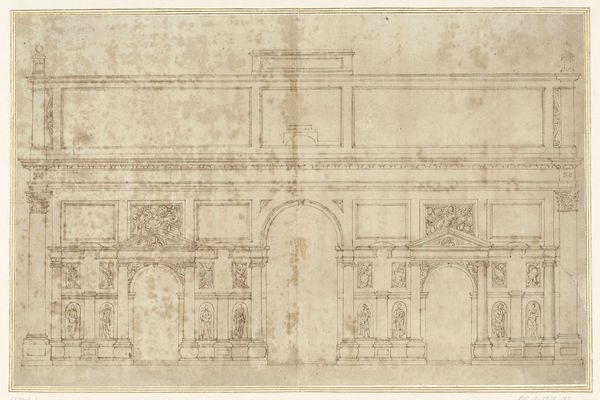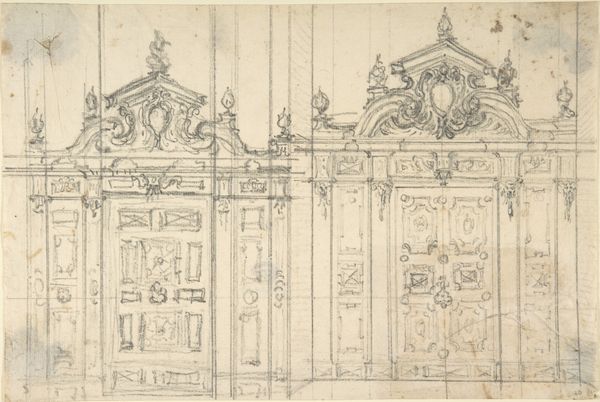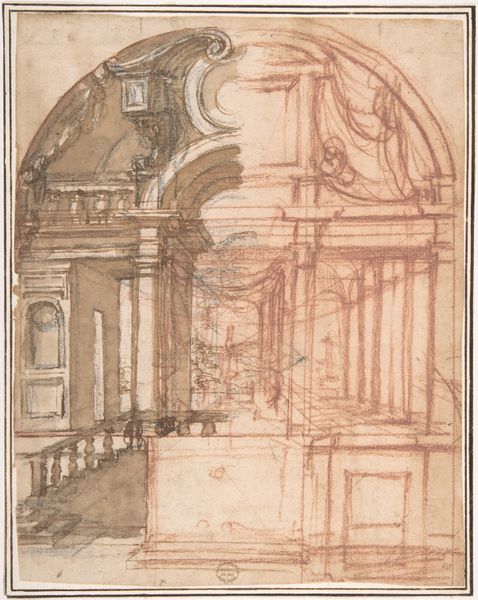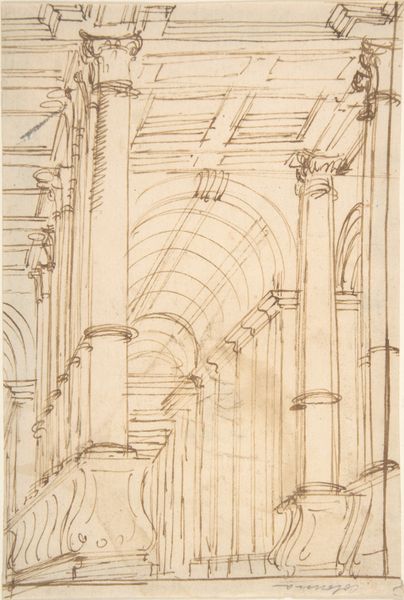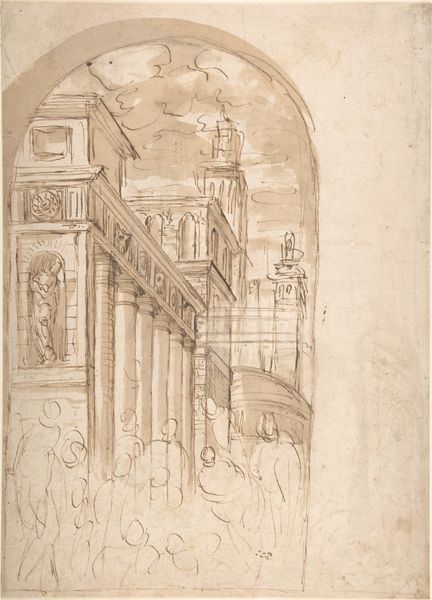
drawing, print, paper, ink, architecture
#
drawing
# print
#
classical-realism
#
etching
#
paper
#
ink
#
geometric
#
line
#
academic-art
#
architecture
Dimensions: 4 x 2-7/8 in. (10.1 x 7.3 cm)
Copyright: Public Domain
Editor: This is an architectural drawing from the 1700s, created with ink on paper. The anonymous artist used precise lines to depict what appears to be a grand hall or temple interior. I’m struck by how orderly and… masculine the composition feels. What can you tell me about it? Curator: The precision of line and the emphasis on geometric forms do create a sense of order, but I want us to also consider what this order masks, particularly in the context of the 18th century. Notice the figure, seemingly a classical statue, positioned in the centre. How does that contribute to your understanding? Editor: Well, it does seem like it’s drawing on classical ideals of beauty. It reminds me of Greek and Roman sculptures I’ve seen in museums. Curator: Exactly. Think about what “classical ideals” signified then. These weren’t just aesthetic preferences. They were intertwined with notions of empire, of power structures rooted in the suppression of other cultures. This drawing isn’t simply a neutral rendering; it participates in a larger discourse legitimizing specific cultural values. Who was being included and excluded when such works were being created and viewed? Editor: So you're saying the emphasis on classical form isn't just about architectural style, but a reflection of the social and political climate of the time? The very idea of "order" enforced through artistic representation becomes questionable. Curator: Precisely. This drawing gives us a window into the way aesthetics were used to construct and maintain hierarchies. When we unpack the intentions, assumptions, and power dynamics that shaped even seemingly “objective” architectural renderings, art history becomes a powerful tool for interrogating the past, and questioning our present. Editor: That's fascinating. I had considered the aesthetic value, but not the social implications. Curator: Exploring these implications transforms how we appreciate the art, but also inspires a greater understanding of who we are.
Comments
No comments
Be the first to comment and join the conversation on the ultimate creative platform.
